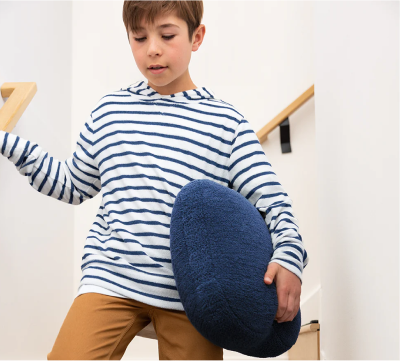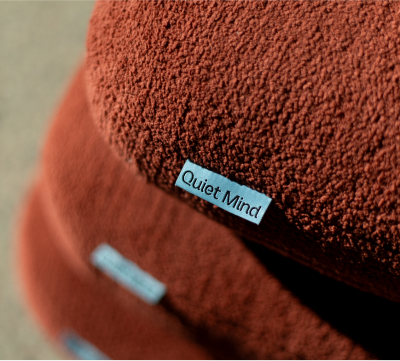ADHD doesn’t follow a straight line. Its intensity rises and falls across different stages of life, sometimes quiet, sometimes overwhelming, but rarely predictable. For many families, educators, and individuals trying to manage ADHD, understanding which ages present the biggest challenges can bring relief and direction.
While the symptoms of ADHD vary widely, certain patterns emerge when we examine development age by age. Some moments are harder than others, not because the person is “failing,” but because their environment, brain, and nervous system are changing in different ways.
Whether a child lives with ADHD, a teen with ADHD is navigating identity, or an adult is discovering they were diagnosed with ADHD as children, this guide offers clarity, compassion, and practical support tools.
Why Age Matters in ADHD: Developmental Milestones and Brain Changes
ADHD is more than restlessness or distraction. It’s a neurodevelopmental condition shaped by brain maturation and external demands, both of which evolve over time.
As a child grows, new challenges arise. The classroom introduces structure. Friendships become more nuanced. Expectations multiply. And behind the scenes, the brain’s executive function, skills like focus, impulse control, and emotional regulation, develops at its own pace. In ADHD, that pace is often slower, creating a mismatch between what’s expected and what feels possible.
The Role of Executive Function and Maturity
Executive function is often described as the brain’s command center. It’s responsible for skills like planning, organization, impulse control, emotional regulation, and sustaining attention. These skills develop gradually from early childhood into the mid-20s, but for people with ADHD, this timeline can look very different.
Research from academic research institutions shows that children with Attention Deficit Hyperactivity Disorder often experience a developmental lag of up to 2–3 years in brain areas responsible for self-regulation. This doesn't mean they won’t develop those skills, only that their timeline is different. And during that gap, the world continues to expect more.
This mismatch can lead to increased frustration, discipline issues, or shame, especially when the child appears bright, social, or creative in other areas. These children often hear, “You could do better if you just tried,” when in reality, their brains are working overtime just to keep up.
As children with ADHD get older, the way executive dysfunction shows up can shift. In early childhood, it may look like symptoms of hyperactivity or impulsive outbursts. By adolescence, it might show up as forgetfulness, disorganization, or emotional reactivity.
And for many adults diagnosed with ADHD as children, the struggle to juggle responsibilities can persist into careers, relationships, and daily life, even if the hyperactive traits fade.
Emotional Regulation Across Childhood and Adolescence
Emotion is often the undercurrent of ADHD that gets overlooked. While focus and attention get the spotlight, the ability to manage big feelings is equally central to the lived experience of childhood ADHD.
Many kids with ADHD feel everything more intensely. Excitement can turn into overstimulation. Frustration can erupt into meltdowns. Sadness can spiral quickly. These aren’t simply mood swings, they’re part of how the ADHD brain processes stimuli. The connection between ADHD and anxiety, for instance, often stems from this difficulty filtering and managing emotional input.
During childhood, emotional regulation tools are just beginning to develop. Children may cry easily, lash out when overstimulated, or struggle to express their feelings with words. As they grow, they may become better able to manage these responses, but only with the right support.
By adolescence, the emotional landscape gets more complex. Hormones, social dynamics, and the pressure to “fit in” can make emotional regulation even harder, especially for those who already feel “different.” An adolescent with ADHD might appear moody, unmotivated, or reactive, when in fact they’re overwhelmed by competing demands and internal disorganization.
Support at this stage isn’t just about discipline, it’s about teaching coping mechanisms. This includes naming emotions, using sensory tools (like movement or weighted pressure), and building routines that allow the brain space to reset.
Is Early Childhood the Most Difficult Age for ADHD?
For many families, the earliest years raise the first questions: why all the movement, big emotions, or difficulty following instructions? These moments often lead to exploring ADHD management strategies that focus on support, not control.
Signs of ADHD in Toddlers and Preschoolers
Many toddlers are naturally busy, impulsive, and intense. But in kids with ADHD, these traits tend to show up more frequently, more strongly, and across more settings.
Some early symptoms of ADHD in young children include:
- Constant movement; running, climbing, bouncing, even when others are still.
- Difficulty playing quietly, taking turns, or following multi-step instructions.
- Interrupting or speaking out of turn, even when told to wait.
- Trouble sticking with activities they enjoy (such as puzzles or books).
- Intense emotional outbursts that arrive suddenly and pass just as quickly.
These behaviors don’t always mean a child meets the criteria for ADHD, but they do suggest that the child’s nervous system is having a hard time filtering input or regulating behavior. A clinical psychologist or developmental pediatrician can help determine if an evaluation is appropriate.
It’s not about labeling. It’s about identifying when a child’s behavior is getting in the way of learning, connection, or emotional well-being. Children diagnosed with ADHD in these early years often benefit from gentle, structured strategies that support sensory regulation and self-control, long before formal schooling begins.
Behavioral Challenges Before Age 6
Before age 6, many children are still learning how to move through the world, but for those with Attention Deficit Hyperactivity Disorder, that process can be significantly more difficult. The symptoms of hyperactivity may dominate this stage, often making the child seem like they are “too much” for typical settings.
Common challenges at this stage include:
- Persistent hyperactivity: A constant drive to move, even in quiet environments.
- Impulsiveness: Hitting, grabbing, or darting into the street without warning.
- Difficulty with peers: Struggling to share, wait, or play cooperatively.
- Emotional intensity: Crying, yelling, or laughing loudly without warning.
This is the phase where ADHD parenting begins to feel urgent. Parenting young children with ADHD requires a delicate balance: offering clear boundaries without shame, encouraging regulation without constant correction.
Support at this age often centers on structure and sensory regulation:
- Predictable daily routines.
- Visual schedules.
- Calming spaces and tools (such as a weighted pillow or quiet corner).
- Movement breaks to channel energy.
- Calm, firm responses that emphasize safety over punishment.
For parents of children with ADHD, learning to see these behaviors as nervous system signals, not bad behavior, can change everything. It allows for connection, not just correction.
Is Middle Childhood the Hardest Stage for ADHD Symptoms?
Between the ages of 7 and 12, many children with ADHD face a shift in both environment and expectations. School becomes more structured. Academic tasks grow more complex. Social norms tighten. And all the while, their developing brains are still learning how to focus, plan, and regulate behavior.
For some families, this stage feels like the steepest climb. The demands increase, but the tools to meet them haven’t yet caught up. Even children diagnosed with ADHD early on may begin to struggle in new ways during this stage. And those still waiting to receive a diagnosis may find themselves labeled as lazy, disruptive, or defiant when they’re simply overwhelmed.
School Demands, Peer Pressure, and Structure
By elementary school, many kids with ADHD are asked to do things their nervous systems aren't quite ready for. These include sitting still for long periods, transitioning quickly between subjects, keeping track of materials, and working quietly without immediate feedback. These demands can make life with ADHD especially hard.
The classroom can quickly become a pressure cooker, especially for children who struggle with staying on task, following multi-step instructions, or managing impulsiveness in social settings. Even bright children may fall behind, not because they can’t understand the content, but because the structure doesn’t match their processing needs.
Social dynamics also change during this time. Peers become less forgiving of impulsive behavior, and children who interrupt, fidget, or miss cues may experience rejection, exclusion, or even bullying. For a child who lives with ADHD, these moments can fuel anxiety, low self-worth, and a growing sense of being “different.”
This is where ADHD and anxiety often begin to overlap. When a child is constantly corrected or misunderstood, they may develop avoidant behavior, negative self-talk, or resistance to learning. The support of teachers, caregivers, and therapists becomes essential, especially for kids still figuring out what their brains need.
Common ADHD Struggles for Ages 7 to 12
This developmental window can be one of the most challenging periods for ADHD in childhood, as both academic and social demands ramp up. Below is a breakdown of typical challenges and supportive responses for this age group:
|
Challenge |
Impact on Children with ADHD |
Support Strategies |
|
Academic Demands |
Trouble organizing, staying focused, or completing homework |
Break tasks into steps, provide extra time, use checklists |
|
Peer Pressure |
Impulsive behavior may lead to rejection or social confusion |
Model social skills, create inclusive play opportunities |
|
Lack of Structure |
Chaos in the classroom or at home can increase emotional dysregulation |
Establish routines, visual schedules, sensory breaks |
Support during these years isn't about perfection, it’s about creating external structure while helping the child develop internal tools. With encouragement, consistent boundaries, and emotional coaching, children begin to develop coping mechanisms that stay with them as they grow.
Parenting a child with ADHD at this stage requires flexibility, advocacy, and deep wells of patience. It also helps to reframe “misbehavior” as communication. Many of these kids aren’t defiant, they’re overwhelmed.
Why ADHD Often Peaks in Difficulty During Adolescence
Adolescence is a storm of change, physical, emotional, social, and neurological. For teens with ADHD, these changes often collide with an already challenged executive system, creating a period of life that feels chaotic, unpredictable, or even unmanageable.
Hormonal changes during puberty can amplify symptoms of ADHD, including impulsivity, emotional reactivity, and poor time management. At the same time, teens are expected to function with increasing independence: managing schedules, turning in assignments on time, regulating emotions, and making decisions with long-term consequences in mind.
The Impact of Hormonal Shifts and Identity Formation
Puberty is more than a physical transition, it’s a neurological one. For people with ADHD, puberty often brings a spike in emotional dysregulation, sleep disturbances, and symptoms may worsen before they stabilize. These hormonal surges interact directly with the brain’s executive systems, which are already delayed in development.
This means that even teens who seemed to manage well earlier may suddenly find it harder to focus, remember tasks, or control reactions. What was once mild ADHD in childhood may now feel more severe, especially in fast-paced or high-pressure environments.
Meanwhile, identity becomes central. Teens begin asking: Who am I? Where do I fit? What do I believe?
And when living with ADHD, these questions may carry added weight. Struggling to meet expectations at home or school can erode confidence and create a sense of being “behind” or “too much.”
For adolescents diagnosed with ADHD, this period may also come with feelings of shame, especially if they’ve internalized the idea that their challenges are character flaws rather than neurological differences. It's essential that caregivers and educators shift the narrative from "what’s wrong with you?" to "what supports your brain best?"
This is where interventions like therapy, coaching, treatment for ADHD symptoms, and peer support can become transformative.
Risk-Taking Behavior and Academic Pressure
The teen brain is wired for exploration but for those with ADHD, this wiring often comes without the brakes. Impulsiveness and sensation-seeking behaviors, paired with inconsistent executive control, can increase the likelihood of risky choices.
Teens with ADHD are more likely to:
- Drive recklessly or struggle to follow safety rules.
- Experiment with substances.
- Skip assignments or classes.
- Procrastinate to the point of academic crisis.
- Engage in impulsive texting, posting, or emotional reactions.
These behaviors are not inevitable, but they are statistically more common in children and adults with ADHD who lack adequate structure and support. Left unchecked, they can lead to falling grades, fractured relationships, or disciplinary consequences.
But risk doesn’t only mean danger. It also means opportunity. When supported appropriately with compassionate coaching, clear boundaries, and access to mental health care, adolescents with ADHD can channel their energy into creativity, leadership, and resilience.
Social Isolation and Its Consequences
Social belonging becomes vital during adolescence but for people with ADHD, forming and maintaining friendships can be complicated. Challenges with reading social cues, regulating reactions, or keeping track of conversations may lead to misunderstandings, rejection, or withdrawal.
Teens with ADHD may be seen as too intense, too talkative, or too distracted. Even those who mask their symptoms may struggle with the emotional toll of hiding their true selves. Over time, this can erode self-esteem and contribute to a cycle of ADHD and anxiety, where fear of social missteps leads to avoidance or self-isolation.
The pain of feeling left out or "too much" can be deeply internalized, especially in those who were never diagnosed with ADHD as children and spent years feeling out of sync. Social rejection, whether subtle or overt, can contribute to later struggles with depression, self-worth, or even trauma.
Is Adulthood Easier or Harder with ADHD? A Look at Long-Term Challenges
ADHD doesn’t disappear with age. It changes. The hyperactivity of childhood may fade, but the struggles with attention, emotion, and motivation often remain.
Persistent and Emerging Symptoms
ADHD symptoms don’t disappear, they adapt. While the average age of diagnosis is still during childhood, many adults are only now learning to name the patterns that shaped their lives. For them, receiving a diagnosis can bring both clarity and grief.
Common adult symptoms include:
- Chronic disorganization.
- Emotional outbursts or sensitivity.
- Difficulty with follow-through.
- Procrastination paired with last-minute productivity.
- Relationship challenges due to forgetfulness or poor listening.
- Trouble with staying on task at work or home.
- Burnout from masking or overcompensating.
Many adults still hold onto shame from being labeled lazy, difficult, or unreliable. But ADHD isn’t a failure of character, it’s a common neurodevelopmental difference. With the right tools, an ADHD person can live a normal life, shaped by meaningful routines, emotional insight, and environments that honor how their brain works.
When reframed through a supportive lens, these traits become manageable, not through discipline alone, but through targeted support, sensory regulation, and rest.
Career, Relationships, and Self-Regulation
Navigating adulthood with ADHD can feel like running a marathon in a world built for sprinters. The demands are constant; deadlines, communication, emotional management and yet many adults diagnosed with ADHD struggle to find tools that actually work for their brains.
In the workplace, common challenges include staying on task, managing long-term projects, or switching between tasks without losing focus. Adults may overcommit and then feel guilty when they can’t follow through.
In relationships, symptoms of ADHD can show up as forgetfulness, interrupting, emotional outbursts, or inconsistency. These patterns are often misread by partners as selfishness or a lack of care. Without support, people with ADHD may feel misunderstood or unworthy of close connection.
Self-regulation remains at the center of many struggles. Adults often experience cycles of burnout, sleep disruption, and emotional flooding. These patterns can lead to ADHD and anxiety diagnoses occurring together, especially when the nervous system is constantly overstimulated.
Support strategies at this stage include:
- Choosing roles that align with focus style (e.g., fast-paced, creative, flexible).
- Using scheduling tools and time-blocking to develop coping mechanisms.
- Practicing mindfulness, sleep hygiene, and positive reinforcement.
- Exploring therapy, coaching, and sensory tools such as weighted pillows.
- Reframing self-perception: ADHD isn’t a failure, it's a different operating system.
What Age Group Faces the Most Impact from Untreated ADHD?
While ADHD affects people of all ages, adolescents and adults often experience the most severe long-term consequences when the condition goes unrecognized in childhood. What begins as school challenges can evolve into emotional distress, strained relationships, and reduced quality of life over time.
Lifelong Effects of Late Diagnosis or Lack of Support
When ADHD is missed in childhood, the ripple effects often continue into adulthood. Many adults who were never treated for ADHD carry deep wounds: lost confidence, fractured identities, and years of thinking they simply weren’t trying hard enough.
Untreated ADHD has been linked to:
- Higher risk of mental disorders such as anxiety, depression, and substance misuse.
- Difficulty maintaining jobs, completing education, or managing finances.
- Unstable relationships due to emotional reactivity or poor communication.
- Increased rates of car accidents, legal issues, or impulsive behavior.
These are not moral failings, they are the downstream effects of a neurodevelopmental condition that was unsupported. When children and adults with ADHD don’t receive timely care, the cost isn’t just academic. It’s emotional, relational, and systemic.
That’s why early treatment of ADHD is so critical. But it’s also why receiving a diagnosis later in life can be profoundly healing. It opens the door to context, to tools, and to self-compassion.
How Support Systems Influence Which Age Feels Hardest
While ADHD traits exist across a lifespan, which age feels hardest is often shaped less by biology and more by support. A child who is surrounded by understanding adults, sensory-friendly environments, and consistent routines may struggle less.
Key Players in ADHD Support
ADHD isn’t managed in isolation, it’s shaped by the support systems surrounding each individual. To manage someone with ADHD effectively, environments need to be responsive, not restrictive.
The age that feels hardest often depends not on the symptoms alone, but on who’s there to help, how well their needs are understood, and whether daily life allows for regulation, movement, and rest.
1. Parents and Caregivers:
Parenting a child with ADHD is an active, evolving process. Parents are often the first to notice symptoms of hyperactivity or emotional dysregulation. Their role includes creating structure, offering positive reinforcement, and advocating for access to care.
-
Support strategies: Sensory routines, calm reinforcement, parent training, emotional co-regulation.
2. Educators and School Staff:
For many kids with ADHD, school is where challenges surface. When teachers recognize the criteria for ADHD and offer appropriate scaffolding, they create an environment where students can thrive, not just cope.
-
Support strategies: Accommodations, visual aids, movement breaks, 504/IEP plans.
3. Therapists and Clinical Professionals:
A clinical psychologist or therapist plays a key role in assessment and long-term planning. From diagnosis to treatment and management, professionals help children and adults build self-awareness, routines, and resilience.
-
Support strategies: CBT, ADHD coaching, emotional regulation skills, family therapy.
Access to Intervention and Coping Tools
The tools for ADHD are most effective when they’re personalized. What helps one child stay focused may not help another. What works for a 10-year-old may not work for a 17-year-old. This is why treatment and management must evolve over time.
Key supports by age group may include:
- Parenting young children: behavioral therapy, visual schedules, movement-based routines.
- Middle childhood: school accommodations (504/IEP plans), sensory regulation, emotional labeling.
- Adolescents: coaching, social support, goal-setting with adult guidance, flexible therapy approaches.
- Adults: therapy, coaching, ADHD-friendly planning tools, environmental design, peer support.
Across all stages, one factor remains essential: nervous system regulation. Tools like weighted pillows, deep pressure input, or sensory breaks can help create the calm foundation needed to actually use cognitive tools like planners or checklists.
Final Thoughts
ADHD isn’t a straight line. Its impact shifts with age, environment, and support. For some, childhood ADHD brings the most visible challenges. For others, the hardest stage arrives silently in adulthood, long after the symptoms of ADHD have been masked, misunderstood, or ignored.
What remains consistent is this: the more aligned the support, the more manageable life becomes.
There’s no shame in needing scaffolding. There’s strength in learning how your brain works, and building systems around it. Children diagnosed with ADHD, teens struggling with impulsiveness, and adults who receive a diagnosis later in life all benefit from the same truth: ADHD is not a character flaw. It’s a common neurodevelopmental condition, and with the right support, growth is possible at any age.
About Quiet Mind
At Quiet Mind, we believe every nervous system deserves compassion, age by age. Whether you’re parenting young children, guiding a teen with ADHD, or unpacking your own late diagnosis, you deserve tools that match the way your brain and body truly work.
That’s why we create calming supports like our weighted pillow; a flexible sensory tool designed to reduce restlessness, support regulation, and offer grounding comfort across all stages of life. Whether used on the chest, lap, or shoulders, it can become a trusted part of your daily rhythm, especially during moments when ADHD symptoms may feel overwhelming.
We’re here to help you move through life with more calm, more clarity, and the gentle structure your nervous system needs.
Frequently Asked Questions
What are the early signs of ADHD in children?
Early signs include difficulty staying still, impulsive actions, and short attention spans. These behaviors often feel more intense and persistent than typical toddler activity. They may also affect sleep, social interactions, and early learning.
How does ADHD affect children at different ages?
In young children, hyperactivity and impulsivity are common. As they grow, challenges shift toward focus, organization, and emotional control. School demands and social pressure can make symptoms more visible.
Can ADHD symptoms change over time?
Yes. Hyperactivity may lessen, but challenges like inattention or emotional regulation can persist or shift as a person grows. Recognizing these changes helps ensure support stays effective.
How can parents and caregivers support children with ADHD?
Parents can help by creating predictable routines, using visual aids or reminders, and offering positive reinforcement. It’s also vital to collaborate with teachers and healthcare providers, explore behavioral therapy, and model calm, structured responses to challenging behaviors.
What are the long-term effects of untreated ADHD?
Untreated ADHD can lead to academic struggles, relationship issues, mental health concerns, and difficulty managing daily responsibilities. Over time, individuals may be at greater risk for anxiety, depression, substance use, employment difficulties, and unstable relationships.
Can adults have ADHD if they were not diagnosed as children?
Absolutely. Many adults recognize patterns later in life such as chronic disorganization, difficulty finishing tasks, or emotional dysregulation, often triggered by career or relationship challenges.
How can individuals with ADHD manage their symptoms?
Managing ADHD is most effective when it’s personalized. Treatment may include behavioral therapy, executive function coaching, medication, mindfulness practices, and environmental supports like timers, lists, or structured calendars.
















